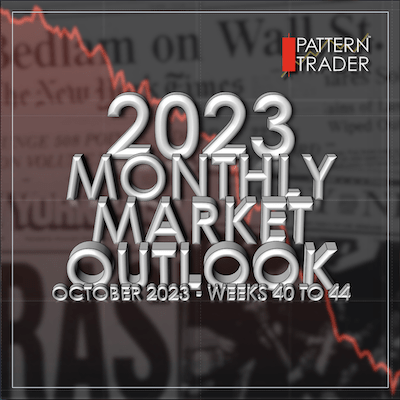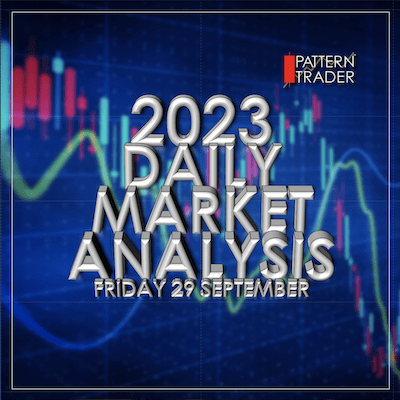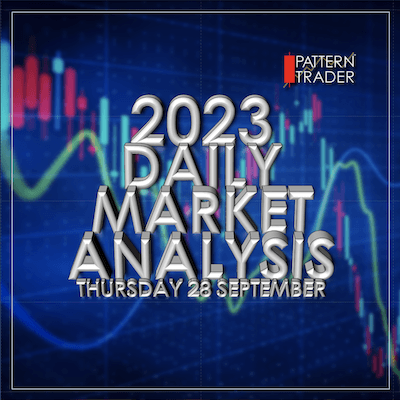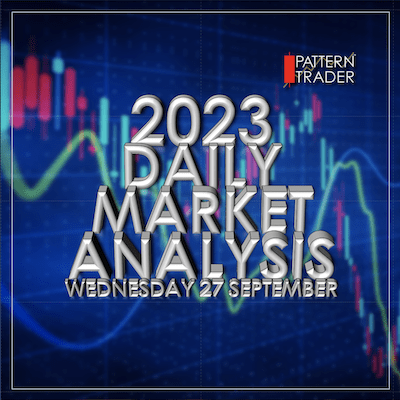
“But paper trading is not real.”
That’s the usual reaction I get when I encourage students and newbies to practice before hitting the markets with real money. Of course it isn’t real and that is why it is so important to understand why and how one must practice in order to get the skill and experience needed to survive this cut-throat business.
It is true that nothing comes close to the reality of trading with real money. The psychological challenges are undeniable and the emotional roller-coaster ride will be unlike anything you’ve ever experienced.
But it is also very true that you’re likely to wipe out your account with your first attempt at the markets. The psychological damage can be irreparable and I have seen the emotional trauma scaring novices from ever venturing into the market again.
Needless to say, the financial loss can really hurt the wallet, the confidence and the pride.
THE EXPERIENCE
“It’s okay to lose to the market.
With the right psychology and discipline,
you can make it back.But if you take a bad trade,
it is going to be a severe challenge
to make back your confidence
and discipline before you can
make back your financial losses.”
You’re not going to perform well in the market on a regular basis if you don’t practice your craft. Hitting the “buy” button is all too easy. However, it is what comes before and after that matters more.
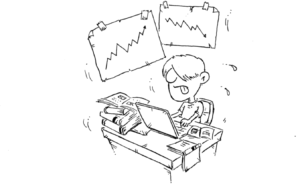
That alone is why so many novices lose out in their first attempt at the markets – they are too focused on attacking for profits and getting rich quick that they don’t consider their defences and preparation.
Most amateur and novice traders are trained to watch for signals in the form of some mathematical permutation, be it the MACD, Moving Averages, Stochastics, RSI and the many other types of indicators and oscillators available in any decent trading platform. This sort of training makes the trader emotional and reactive rather than analytical and tactical.
Trading is really about fighting to not lose to the market while keeping your confidence to live and fight another day. To achieve this, planning and preparing is the major part of the task. Set-ups, contingencies and strategies become your best allies.
Your system of set-ups and strategies are based on endless hours of backtesting and practice. The practice will give you the experience that comes from countless mistakes and mishaps. The lessons learnt come from repeating the process over and over again until the practice becomes a habit and the habit becomes a discipline.
But that takes time … time that most novices and amateurs feel they don’t want to waste for fear of “missing the ride” or “getting left behind” or FOMO (Fear of missing out).

This impatience in getting the experience comes from the common belief that the financial markets are a place where you can get-rich-quick – an idea that has been sold so often and so loudly that eventually, most people believe it to be true.

The truth is, the financial markets are anything but. It is the most manipulated business in the world and your opponents on the other side are the most qualified, well trained and experienced professionals in the world that have all the advantages that you won’t have. Thus, it will take a lot of learning, knowledge, training and experience to navigate this business safely to avoid the pit falls that only make the rich richer and the poor poorer.
With practice, you become trained with procedure. The procedure becomes a discipline. Discipline breeds routine. Routine becomes familiar. Familiarity becomes a habit. A habit that is well practiced breeds confidence.
You can never get that training and experience if you don’t practice your craft. And it starts with proper paper trading. After all, if you can’t paper trade seriously and consistently, how will you manage trading with real money?
THE REALITY
The main reason most traders don’t take their paper trades seriously is because they are not trading under realistic or serious conditions. This stems from the default setting of all paper trading platforms – they give you a lot of money to paper trade with – which in reality, is not relative to the real money you are going to fund and trade with.
Almost every beginner will start their trading journey with the minimum funding of between $3,500 to $5,000, depending on the broker. Other more affluent beginners may start with $10,000.
However, they paper trade on an account with $200,000 or $500,000 because that’s the default setting for most paper trading platforms. From hereon, a nasty precedent is set and the precious experience from paper trading will be lost.

What happens next is that the account draws down because of some losses and soon, the paper money losses accumulate to more than $5,000.
Consider this now … if you had been trading with real money on a funding of $5,000, you’d have wiped out your account by now. But because you still have $195,000 left from your $200,000 paper account, that $5,000 loss means nothing to you.
Keep your paper trading real. Drill your paper money down to the amount you intend to fund before you start trading. Then trade under those conditions. You’ll find that it is a real struggle to trade on a small account because there’s not a lot you can buy. There isn’t even sufficient margin on a small account to make a short-sell or hedge. If you accumulate a loss of $1,000 from your $5,000 account, you’d have wiped out 20% of your account. The struggle gets even tougher then.
Those are realistic conditions that will plague your real money venture. Those are the circumstance you want to experience and learn from before venturing in with real money.

Nothing can be gained from trading a huge and unrealistic paper trading account except the habit of living in denial.
THE WORKSTATION

The platform that you use to trade with can be a very complex and even complicated system. It is imperative that the trader knows this platform inside-out and is able to operate it without confusion, fuss and errors.
This is where paper trading is most useful.
Setting your orders and getting executions are an integral part of online trading. Knowing the platform then becomes a priority so that you don’t make silly mistakes with your executions. Setting wrong orders have lost money for most beginners because of their unfamiliarity with the platform. Simple tasks become costly errors such as setting the incorrect quantity, stop levels that are too shallow, putting the trails incorrectly by one decimal point and even buying when you should be selling.
The operation of the platform must be practiced till it becomes second nature. With all the focus being on your trade, you shouldn’t need to be bothered by technical issues that only add to your stress.
It is like driving a car and getting familiar with the functions, operations and all the bells and whistles on the dashboard. You don’t want to be turning on the wiper when you wanted to turn on the lights. Neither do you want to be in reverse when you should be going forward.

If you took the effort to familiarise yourself with your car so that you could be competent and safe while driving, you should be equally as concerned about learning how to navigate your platform efficiently by practising on it regularly.

“The difference between good and great
is that being good is a God-given gift
while becoming great is a God-given gift
that is practiced to perfection.”
SUMMARY

This is why it is imperative that traders and investors have systems and set-ups to take them through their paces when venturing into the financial markets. Rules and guidelines help keep emotions in check as the academic part of the brain keeps working.
Train and practice with a focus on systems and set-ups that work towards consistency.
Persistence and perseverance turns practice into habit. A good habit eventually becomes a discipline. With discipline, the training takes over systematically without the worry of logic or emotions.
This workman-like efficiency makes the trader function with intention and objectivity rather than react emotionally. This is what I call, Trading To Trade Well.
COPYRIGHT© 2019 FINANCIALSCENTS PTE LTD
~~~~~~~~~~~~~~~~~~~~~~~~~~~~~~~~~~~~
PATTERN TRADER™ TUTORIAL

After 14 years of educating, mentoring and supporting hundreds of participants (annually) in the arts and sciences of Finance and Economics, the Pattern Trader™ Tutorial has evolved to become the most exclusive and sought-after boutique-styled class that caters to retail individuals, institutional professionals, businesses and families that are serious about their finances and their prospects as we move into the future.
The small class environment and tutorial-styled approach gives the Tutorial a conducive environment that allows for close communication and interaction between the mentor and the participants.
The hands-on style makes the Tutorial very practical for anyone who requires a start from the ground up. It is the perfect beginning for anyone who wishes to take that first step in improving their financial and economic literacy.
If you’re looking to make a huge difference in your financial life and get the most value for your education investment, there’s no better choice than the time-tested and well reputed Pattern Trader™ Tutorial.
Download our promo slides here:
The Pattern Trader™ Tutorial 2019
~~~~~~~~~~~~~~~~~~~~~~~~~~~~~~~~
Write to conrad@finscents.com for queries and further information

